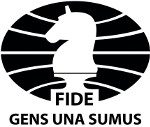Two Types of Transfer and Their Characteristics
By Renate Otterbach
Salomon and Perkins described two types of transfer and their potential benefits in their article. They labeled them as low and high road transfer; however, in current literature, near and far transfer is more frequently used. Whereas this new label more accurately describes the characteristics of each type of transfer, a crucial concept has been lost- specifically, the level of abstraction at which the transfer occurs.

The crucial difference between the two forms of transfer is the difference in encoding information. The near transfer is information-focused, and the far transfer is process-focused. Viewed from this perspective, it is, therefore, not surprising that the information encoded at the content level of one domain does not transfer to other domains; this has been shown in many domains. Based on these observations, it frequently has been concluded that far transfer does not even exist. Yet, Salome and Perkins pointed out that far transfer is heavily dependent on processing skills, especially analytic skills, because people with high analytic skills are able to reduce encoding errors. They state that highly analytic people, and in chess grandmasters also seem the have these skills, thereby connecting chess to far transfer.[1]
According to Salomon and Perkins, information encoded at the process level transfers across domains. On the surface, given the research on near and far transfer, this claim seems to contradict our research data; however, a deeper analysis provides us with deeper insight. Generally, the task used in expertise studies involved the transfer of concepts, not processes. Yet, the claim for far transfer by Salome and Perkins is related to processing skills, not content skills.
This appears to be another way of describing what is generally labeled intelligence or reasoning skills; however, this is not the case. Intelligence or reasoning skills, as generally understood, are abilities that you possess. In contrast, as used here, it is the extent to which you are willing to invest your abilities to understand ideas and concepts. The more intellectual effort you put into learning a concept, the more likely you are to identify misconceptions and address them. Consequently, you are better at identifying what type of information to use and when. One of the advantages grandmasters have over novices is that they are able to identify “critical positions” nearly intuitively. They may not immediately know what is wrong and go into a “deep think,” taking a larger amount of time to study the position carefully, looking in terms of chess principles such as space advantage, pawn structure, pressure, strengths, and weaknesses, as well as specific tactical and strategic opportunities and challenges of the specific position. They are able to this because, over time of intense study and analysis, they have developed a framework that enables them to focus on the pertinent information.
In contrast, novices suffer a lack of understanding of the position (feeling lost), cognitive overload (too many possibilities), or a combination of both. The case of problem could be limited knowledge about the domain (chess) and not-yet competent calculation skills.
The focus of education, in general, has been on developing domain-specific instruction, giving minimal attention to the interaction between content and process skills. Although most educators are familiar with Bloom’s taxonomy, few teachers require their students to cover the content through the analysis or synthesis level. Even those who do so often fail to ask the pertinent questions. Who is doing the cognitive work, the teacher or the student?
Unless the student is required to do the analysis and the synthesis, at best, you will only get near transfer and, most of the time, no transfer at all. It may even be the case that near transfer is restricted to students whose preferred method of learning is analytical. As suggested earlier, chess may be a domain in which high analytical skills are advantageous, which may be why many high-ability students are drawn to chess. However, as chess educators, our primary goal is to help students naturally develop those skills, and to accomplish this, we need to explore the conditions for both forms of transfer. In the next blog, we will take a closer look at how to facilitate the development of near transfer.
[1] They only point out the relationship not causality. It is important to remember this difference, as it is unclear if these grandmaster developed these abilities because they played chess, or if their abilities drew them to chess. Yet the comment does imply that a relationship exists. One inference that might be drawn from this statement is that chess potentially is a good domain to study far transfer.
This post is the sixth part of Renate’s Develop learning to learn strategies through chess series.


